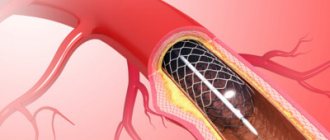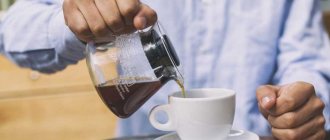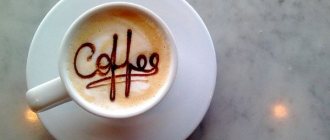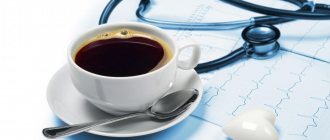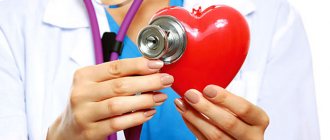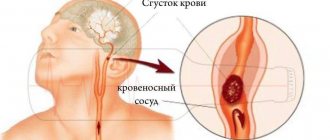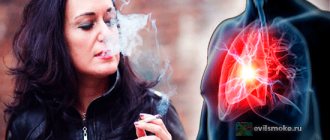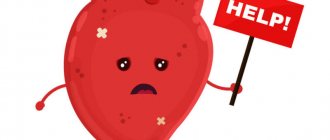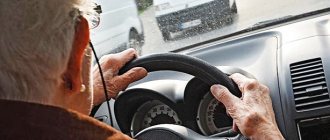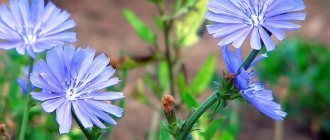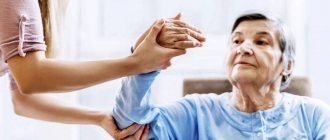Proper nutrition after a stroke is of great importance. It is an important component of rehabilitation measures, which also include drug treatment, a specific set of physical exercises aimed at restoring the mobility of paralyzed limbs, and massage.
A well-chosen diet after a stroke promotes rapid recovery and prevents relapses of the disease.
Briefly about the disease
To better understand the role of diet, briefly about the pathogenesis and etiology of the disease. Stroke is an acute disorder of cerebral hemodynamics caused by the cessation of oxygenation of certain areas of the cephalic region. As a result, oxygen starvation of the neurons in these areas occurs and their necrosis (death).
There are two types of stroke:
- ischemic - caused by thrombosis of the lumen of the vessel or its blockage with a cholesterol plaque;
- hemorrhagic - bleeding into the brain or between its membranes, the resulting swelling compresses the blood vessels.
Main etiological factors:
- arterial hypertension:
- thrombosis and/or deposition of atherosclerotic plaques on the walls of cerebral vessels;
- chronic cardiovascular pathologies;
- endocrine diseases;
- obesity;
- physical inactivity;
- excessive consumption of alcoholic beverages, psychoactive and other medicinal substances, smoking.
List of approved products
After a stroke, many dishes and products are prohibited. Nevertheless, the list of products that can be consumed and even recommended is large enough to provide a varied menu for every day.
Lean meat and fish, baked or boiled, are allowed:
You can eat boiled egg whites.
In addition to black and whole grain bread, crackers and savory cookies are allowed.
Recommended purees, side dishes, casseroles from vegetables: pumpkin, zucchini, eggplant, tomatoes, carrots, cucumbers, boiled or baked potatoes, white cabbage, cauliflower and other types of cabbage.
It is useful to add onions, garlic, parsley, horseradish, dill, and fennel to dishes.
The importance of diet
The goal of the diet is to achieve hypocholesterolemia and reduce the consumption of animal fats to a minimum. Properly selected nutrition after a stroke contributes to:
- reducing the penetration of cholesterol, removing excess from the body;
- normalization of hemodynamics in the cephalic region;
- preventing the formation of cholesterol plaques;
- supplying the brain with a complete set of necessary substances;
- metabolism stabilization;
- normal functioning of the heart, endocrine glands and other internal organs;
- weight normalization;
- speedy reparation;
- preventing the development of complications and repeated attacks.
Conclusion
A healthy diet is the key to preventing a new stroke and transient ischemic attacks. People who have suffered cerebral ischemia should adhere to proper nutrition, regardless of what concomitant diseases they suffer from.
To ensure that meals contribute to rapid rehabilitation, patients are recommended to take part in “Stroke Schools”, in which neurologists and nutritionists help patients choose an individual diet. Regardless of the taste preferences and needs of the body, the safest drink after a stroke is distilled water.
Useful video on the topic:
Postulates of the diet
After a stroke, proper nutrition should be:
- frequent (5-6 times a day) and fractional (portion does not exceed 150 g);
- in terms of energy costs do not exceed 2500 kcal per day, for obesity - 1900 - 2000;
- balanced (adhere to a strict ratio of all metabolic components);
- the most useful and nutritious option is to replace foods of equal calorie content that are heavy for the body with dietary ones;
- varied and does not cause loss of appetite. A “colorful” menu is recommended, especially for the elderly and visually impaired. The brighter and more colorful the table is from the natural components of fruits and vegetables, the more vitamins and microelements there are;
- enriched with: antioxidants that prevent neuronal hypoxia;
- electrolytes that promote the conduction of nerve impulses between neurocytes;
- substances with angioprotective properties.
Why is coffee dangerous after a stroke?
The problem is not the drink itself, but the caffeine it contains. As we already know, this alkaloid can cause increased blood pressure and increased heart rate, and this is contraindicated for those who have suffered a stroke.
So coffee is strictly prohibited during the acute phase of the disease, as well as during medication and physiotherapy. The recovery period is also better spent without the usual drink.
Subsequently, coffee can be returned to the diet. Moreover, according to medical research, the increase in blood pressure under the influence of caffeine occurs more strongly in those who rarely drink coffee. The drink has a much weaker effect on avid coffee drinkers, but in any case, you need to get used to drinking a weak drink.
It is highly advisable to dilute it with milk, cream or drink with the addition of lemon. All of these supplements counteract the effects of caffeine, which poses a very serious threat to stroke survivors. Many people try to solve the problem by switching to decaffeinated coffee. This is the wrong way. After all, when processing beans, a small dose of caffeine is still retained in them, so you shouldn’t be fooled - this substance is always present in coffee in varying quantities.
Hemorrhagic stroke is accompanied by rupture of blood vessels in the brain. Because of this, hemorrhage and swelling of the organ occurs. This type is the most dangerous and difficult to restore. The person's condition is very serious. Hemorrhagic accounts for twenty percent of the total number of strokes. Most of the survivors become disabled.
The ischemic type is more common. When it occurs, blood vessels become clogged and blood circulation in any part of the brain is disrupted. Because of this, cells are destroyed and the patient's body functions are impaired.
The recovery period lasts on average up to two years after the impact. It is divided into early and late - up to 6 months and up to several years. It begins in the first days after a stroke, when the patient is in the hospital. Then he is transferred to the rehabilitation department. In the early period, body functions are restored in the following ways:
- medicines;
- kinesiotherapy;
- massage;
- psychotherapy;
- physiotherapy;
- gymnastics: yoga, swimming.
First, the patient re-learns to control the body and make simple movements - get up and sit down. Then occupational therapy is involved: simple everyday skills are restored. To work on speech, they work with a speech therapist.
To correctly determine the rehabilitation program, you need to talk with your doctor about the goal. With hard work, after 6 months the patient can return to work and hobbies.
Drinking alcohol is not recommended. Sometimes it is allowed to use it no more than three times a month in small doses:
- no more than 50 grams of strong;
- 150 grams of wine;
- 300 ml beer.
Is it possible to drink non-alcoholic beer after a stroke? Yes, but not much, since carbonated drinks are also not recommended. This applies to kvass and lemonades.
During the recovery period, coffee is excluded from the diet. It does not combine well with medications and procedures, raises blood pressure and excites the nervous system.
The drink is returned to use gradually under the supervision of a doctor.
Diet No. 10
The diet menu for cerebral stroke is compiled on the basis of a special table No. 10, which is also indicated for cardiac diseases. Tasks of table No. 10:
- eat enough proteins;
- reduce salt intake, which causes edema and hypertension. In the first 15 - 20 days, exclude completely, then gradually introduce, not exceeding the amount of 2-3 g per day;
- give up easily digestible carbohydrates (confectionery, flour products);
- complex carbohydrates are preferable to simple ones (cereals, vegetables, grains);
- replace animal fat with vegetable fat;
- limit foods high in cholesterol;
- drink up to 1.5 liters of plain still water per day, which normalizes metabolism and helps eliminate toxins;
- preference is given to vitamins C, E, group B;
- be steam processing of food or cooking (exclude fried food).
Lifestyle after a stroke
Life doesn't end after a stroke.
It can be almost full-fledged, filled with work, travel and entertainment. But this depends on many factors: the severity of the blow, the patient’s condition after the stroke, his mood, concomitant diseases, and proper rehabilitation. The faster medical assistance is provided, the easier the consequences. It is most effective in the first 3–5 hours. If you notice signs of a stroke in yourself or your loved ones, call an ambulance immediately.
A prerequisite for recovery is long-term rehabilitation. Doctors recommend starting it on the first day - the patient needs to move, try to sit down. Recovery continues both in the hospital and at home.
For people with minor injuries, it is enough to endure some restrictions during this period: do not smoke, eat right, and follow all the doctor’s prescriptions. Patients with more severe injuries may permanently lose some function, but rehabilitation will help them adapt to these changes.
The quality and length of life depend on several factors:
- Danger of recurrent hemorrhage. A second blow reduces life expectancy to 2–3 years.
- Type of impact. With the hemorrhagic type, the likelihood of death is higher
- Extent of damage: with large damage, the lifespan is reduced.
- Developing complications lead to the formation of other symptoms that worsen the quality of life.
- General health.
- Presence of paralysis: they contribute to the formation of blood clots, increasing the risk of another stroke.
- Patient safety. Due to lack of coordination and weakness, he may get injured.
In order to recover as much as possible, the patient needs to change his lifestyle. The first is the mandatory and regular use of all medications prescribed by the doctor.
Regular physical activity is very important. In addition to special gymnastics, it is useful for the patient to engage in walking and moderate activity every day - playing with children or grandchildren, pets, cleaning, gardening, riding public transport. Sometimes light sports are recommended: patients go to the pool or do yoga.
To protect yourself from a second blow, you need to eliminate risk factors. This:
- excess weight;
- passive lifestyle;
- smoking and alcohol;
- stress;
- high pressure.
Is it possible to smoke after a stroke? It is forbidden. Old habits will have to be abandoned. Smoking after a stroke is strictly contraindicated, as it increases the risk of blood clots.
Life expectancy for 31% of those who suffer an ischemic stroke is more than five years. For hemorrhoids, this figure is 24%.
Survival rates decrease with age. Young patients are more likely to live longer if the problem does not recur. Up to 45 years of age, the number of deaths after an impact does not exceed 25% of all patients.
Secondary stroke occurs in 10-15% of people during the year. In the first 5 years it occurs in 25% of women and 45% of men. This is why rehabilitation is so important.
About 12 million strokes are recorded worldwide every year. Half of them end in death. In Russia, 450 thousand people encounter it.
75% of patients under forty and 60% of people over 50 survive and are rehabilitated.
So, a person after a stroke can live a full life or restore many functions. This requires careful and long rehabilitation. If you follow all the doctors' recommendations and take medications, the patient has a chance of returning to work and social activities. But he will have to reconsider his lifestyle and make it healthier.
Diet composition
What can you eat after a stroke? Products containing the following substances:
| Substance name | Action | Where is it contained? |
| Vitamins B, C, D | Helps reduce homocysteine levels, which provoke a recurrent stroke | Asparagus, wheat germ, sunflower, nuts, broccoli, spinach, carrots, corn, legumes |
| Polyunsaturated omega-3, omega-6 acids | Participate in biochemical processes in the brain, improve hemodynamics. | Sea fish, seafood (eicosapentaenoic and docosahexaenoic acids), vegetable oils (linolenic acid). |
| Folic acid | Reduces blood pressure and prevents possible relapse. | Legumes, various types of cabbage (except white cabbage), asparagus, carrots, corn, pumpkin, celery, lettuce, lentils, citrus fruits. |
| Microelements calcium, phosphorus, potassium, magnesium, iron | Normalize metabolism and have a strengthening effect. | Potatoes, tomatoes, bananas, garlic, citrus fruits, dried fruits, rice, oatmeal, cabbage, bran bread, nuts, beef. |
| Squirrels | Promotes speedy recovery and strengthens the body. | Dietary lean meats |
| Anthocyanidins | Reduce capillary permeability | Blue and purple vegetables and fruits (eggplants, plums, dark grapes, plums, beets, red cabbage). |
| Beta-carotene | Decreases A/D. | Vegetables and fruits of red and yellow color - carrots, red bell peppers, pumpkin, apricots. |
| Vitamin E | Antioxidant properties (removes free radicals, normalizes metabolism). | Sea fish, soy, dairy products, herbs, vegetable oils. Antioxidants are found in all types of cabbage, cranberries, blueberries, spinach, and beets. |
| Complex carbohydrates | They normalize energy metabolism, reduce cholesterol levels, promote neuronal repair, and give a feeling of satiety. | Cereals – buckwheat, barley, oatmeal, cereals, zucchini, apples, brown rice. |
Principles for choosing drinking products
When choosing drinks, the patient is guided by their composition and effect on the nervous system and digestion.
Drinking products must replenish the lack of fluid that occurs due to the inflammatory process and meet the following requirements:
- The ingredients do not contain irritating components (ginger, bergamot, kombucha) or substances that affect the nervous system (caffeine, alcohol);
- Concentrated drinks are diluted with water;
- Ready-made foods containing dyes, gases and preservatives from the diet
- The optimal liquid temperature is 35-45 degrees;
- In the early rehabilitation period, drinks that cause thirst (with a sweet taste) or have a diuretic effect (fruit drinks, decoctions) are not consumed.
The optimal diet (treatment table No. 12) for stroke patients was developed by Russian doctor Manuil Isaakovich Pevzner. The table is designed to restore the functions of the nervous system and is characterized by a reduction in the amount of salt, carbohydrates and extractives, and an increase in phosphorus-containing products (liver, beans, milk) in the diet.
Balanced diet
After a stroke, it is recommended to replace the usual “harmful” foods that the patient ate previously with healthy ones of equal energy value.
Instead of:
- butter, lard - vegetable oils;
- whole chicken and quail eggs - whites;
- fatty lamb, pork, veal tenderloin - lean varieties of veal, chicken, rabbit, turkey, fish;
- fatty cheeses - varieties with a fat content of less than 10%;
- full-fat milk, cream - dairy products with a fat content of less than 1.5%;
- cookies, crackers, chips - rye crackers;
- ice cream - chilled juices (not canned);
- sauces, mayonnaise, ketchup - lemon juice.
To control your weight, you need to weigh yourself every 14 days.
Sample menu for two days
Following a patient’s diet after a stroke is the key to a quick recovery. Food should be varied and nutritious. It is recommended to create a menu for every day based on the list of products allowed for consumption. At the same time, the products included in the menu should complement each other.
The menu (diet) for day 1 is as follows:
Breakfast (08.00). The day starts with breakfast. It may consist of:
- oatmeal porridge cooked in low-fat milk;
- a sandwich made from bread and low-fat butter;
- green or weak black tea.
Second breakfast (10.00). Involves eating 1 banana.
Lunch (12.00). At noon they use:
- vegetable salad with boiled buckwheat;
- steamed cutlet and fresh vegetables;
- cabbage salad dressed with olive oil (white cabbage);
- peach or orange juice (fresh, just squeezed).
Afternoon snack (14.00-16.00). At this time, you can eat low-fat cottage cheese mixed with berries.
Dinner (18.00). In the evening the patient can prepare:
- pearl barley porridge;
- steamed fish cutlet;
- fruit jelly.
It is allowed to include 1 tomato in the diet.
About 2-2.5 hours before bedtime, it is advisable to take a decoction of rose hips.
Nutritious diet. Day 2:
Breakfast (08.00). In the morning you are allowed to eat:
- cottage cheese casserole;
- fruit jam.
Green tea is consumed as a drink.
Second breakfast (10.00). It is allowed to eat bran bread and low-fat drinking yogurt.
Lunch (12.00). Patients have lunch:
- lean borscht, beetroot soup;
- boiled potatoes with boiled chicken;
- vegetable salad dressed with olive oil;
- berry compote.
Afternoon snack (14.00-16.00). At this time, it is useful to eat some dry cookies and wash it all down with a herbal decoction.
Dinner (18.00). In the evening it is useful to consume:
- buckwheat porridge;
- sea fish boiled in water;
- carrot salad with grated apple;
- fruit jelly.
Before going to bed, consume low-fat yogurt. The menu needs to be rotated. The diet can be adjusted based on the patient’s tastes and on the basis of the list of foods acceptable for consumption.
What is contraindicated
People caring for a patient need to remember not to eat or drink after a stroke.
Table of prohibited products
| Group | Products |
| animal oils | butter, margarine, lard, lard, fat tail |
| fatty foods | sausages, ham, bacon, casseroles, pies |
| dairy products with a high percentage of fat | sour cream, cream, cheeses, yoghurts, fermented baked milk |
| products containing cholesterol, palm kernel, coconut oils, trans fats | ice cream, fast food, cookies, chips, egg yolks |
| spicy, salty, marinated dishes | any |
| mushrooms | any |
| sweet products | cakes, pastries, jams |
| beverages | alcohol, coffee, dark tea, energy drinks |
| roast | french fries, lamb, pork, chicken, fish, pies, scrambled eggs |
Failure to follow these recommendations may invalidate all achieved treatment results.
Driving after a stroke
Is it possible to drive a car after a stroke? This issue is resolved by the attending physician.
You can return to driving a car no earlier than three months later, if the damage was minimal. Patients experience difficulty driving due to poor coordination and vision.
Therefore, driving until fully recovered is dangerous for the driver and passengers. To be sure that a person is ready to return to the wheel, a special test is carried out in the presence of an instructor.
People whose profession involves driving are worried about whether they can work as a driver after a stroke. This should be determined by a special commission. Unfortunately, most often she recommends changing your profession.
Feeding stages
I. In the first days of stroke, nutrition, swallowing is impaired, and unilateral hemiparesis or paralysis is observed. Bedridden patients are fed parenterally in the hospital. Usually these are nutritional mixtures containing the necessary substances to maintain life. Pureed soups, milk, and liquid cereals can also be used. The food must be brought to a puree or mushy state.
The nutritional plan is compiled individually, taking into account the severity and concomitant diseases. It is necessary to observe the compatibility of foods with medications, follow the rules for taking medications (before, during or after meals). If you have diabetes, you need to consult an endocrinologist and nutritionist, since starch can be used to add thickness, which exceeds the carbohydrate balance in the body and provokes an exacerbation of diabetes.
II. Tube feeding is carried out in a hospital setting. In addition to patients with swallowing and respiratory dysfunction, it is indicated for those who have developed mental disorders due to cerebrovascular accidents. More often these are depressive manifestations with partial or complete refusal to eat, indifference to what is happening. Such patients are force-fed until there is a positive trend.
Juices
A feature of juices is their high content of simple carbohydrates (fructose, glucose, sucrose).
If your stroke is accompanied by diabetes, drinking juices makes it much more difficult to control your sugar levels. In addition, sugar causes blood thickening in all patients, so juices should be consumed after dilution (1 part juice to 3 parts water).
Freshly squeezed juices increase gas formation and urination, which causes many additional complaints in bedridden patients, so they can be replaced with compotes and decoctions. Ready-made products from stores, as well as tomato juice, which contains a lot of salt, should not be consumed.
IMPORTANT! Most patients after a stroke are forced to use glucocorticosteroids for one reason or another. These drugs in 100% of cases help to increase blood sugar levels, so during the period of using hormones, juices are completely excluded from the diet.
What food to cook
Tube feeding
Lean varieties of meat or fish are minced twice, then rubbed through a sieve. As a side dish, take heavily boiled vegetables and make a puree from them. The pureed meat is mixed with the side dish and the broth is added, bringing it to such a consistency that the food can pass through the tube.
Porridges are also pureed and diluted with milk or broth.
Self catering
What exactly and in what form is useful to eat after a stroke:
| Group | Products |
| Bread and bakery products.. | Preference – rye, black, gray, stale, salt-free. Wheat, with bran - with restrictions. Dry cookies - biscuits, crackers - are allowed. |
| Soups | Vegetables – beetroot soup, borscht, with cereal. Cook in vegetable broth or water. Okroshka, soups with gelatin, and puree soups are recommended. |
| Meat and poultry | Low-fat varieties are first boiled and then baked. Can be steamed in the form of cutlets or meatballs. |
| Fish and seafood | Served boiled, steamed, baked, gelled. They eat sea fish. |
| Side dishes | Better vegetable ones, boiled and steamed, like a stew. You can include salads made from fresh vegetables, seasoned with vegetable oils. With caution - radishes, radishes, peas, green onions, shallots. Pasta side dishes are limited. |
| Milk and dairy products | Fat content should be minimal. Low-fat sour cream is allowed to be consumed only as part of dishes. Cottage cheese and kefir are best. |
| Eggs | Do not exceed 4 pieces in 7 days. Proteins are allowed to be consumed more often than yolks. In the post-acute period, no more than 1 egg is allowed daily in the form of casseroles and egg white omelettes. |
| Oils | In the form of porridge. Semolina is excluded. You can make casseroles and puddings. |
| Beverages | Freshly squeezed juices, compotes, decoctions, fresh juices, and green tea are preferred. It is allowed to drink smoothies made from low-fat milk or yogurt. |
| Sweet | You can eat honey, soy candies with jelly, jelly, mousse, soufflé, dried fruits |
| Cereals | In the form of porridge. Semolina is excluded. You can make casseroles and puddings. |
After a stroke, it is preferable to choose seedless fruits that contain potassium and are dark in color.
Menu examples
Sample self-catering menu for a week after a stroke:
Recipes
A balanced diet after a stroke includes dishes in recipes that you can replace ingredients and use them for the whole family. A nutritious diet is not only a remedy, but also an important element of a healthy lifestyle, suitable for children and adults, and this approach to food is especially useful in old age.
First meal
Soups are an essential component of the diet. By excluding foods prohibited during a stroke, you can prepare many healthy dishes for lunch:
- Borsch. Potatoes, carrots and fresh tomatoes are cut into cubes, cabbage is finely chopped, beets are grated. First place cabbage in boiling water or vegetable broth, and after a few minutes - the rest of the vegetables. Beets are added when the vegetables are almost ready. Serve with chopped herbs and a spoonful of sour cream.
- Soup with cereals. Vegetables (potatoes, tomatoes and carrots) are chopped randomly. Cereals (wheat, buckwheat, lentils) are washed; pearl barley requires pre-soaking. Boil the vegetables for about 5 minutes, then add the cereal and heat for another 15 minutes.
- Vegetable puree soup. Prepared from several products or 1 vegetable (zucchini, pumpkin, carrots). All ingredients are boiled until soft. The finished soup is ground in a blender or with a grinder.
Important information: How to quickly recover a person after a stroke at home (rehabilitation)
Nutrition for microstroke, corresponding to this diet, reduces the risk of progression of the pathology and increases the effectiveness of drug therapy.
Second courses
In addition to cereals, purees and pasta, it is useful to prepare casseroles, adding vegetables or cereals to them. Such dietary dishes are universal. They are suitable for any main meal, and a small portion can be eaten as a snack if necessary. Several variants:
- Cottage cheese casserole. Take low-fat cottage cheese and beat with egg and semolina until it reaches the consistency of sour cream. Leave for 30 minutes for the semolina to swell and place in a thick-walled mold. The curd mass is baked for 45 minutes at a temperature of +200°C.
- Pumpkin and carrot pudding. Vegetables are measured equally (200 g of pulp), chopped and boiled until tender. Adding an egg, 1 tbsp. l. honey and half a glass of semolina, beat the mass with a blender. After half an hour, the settled mixture is placed in a mold and baked at +200°C for no more than 25 minutes.
- Buckwheat casserole with cottage cheese. From 70 g of buckwheat, cook a viscous porridge and, after cooling, mix with half a pack of cottage cheese and 1 egg. Place in a mold and bake for 30 minutes at +220°C.
Meat and fish dishes are prepared independently, avoiding ready-made store food. Nutrition for ischemic stroke and its hemorrhagic type involves the consumption of lean meats. It can be steamed or boiled. After a micro-stroke, you can eat fish baked without adding cooking fats.
An egg is added to the minced meatballs and cutlets; it is useful to dilute the mixture with vegetable puree. Semolina is used for breading.
Dessert
The absence of sweets in the diet is compensated with fruits. Some delicious desserts can be made without sugar and are also suitable for diabetics:
- Paste. Finely chop peeled sweet apples. Boil them until softened with a small amount of water. When the mass becomes homogeneous, rub it through a sieve and place it on a baking sheet in a layer of about 5 cm. It is most convenient to use baking paper. The layer of fruit mass is leveled and dried without closing the door, setting the temperature regulator to +120°C. The hardened layer is turned over and continued to be heated. The marshmallow is ready for cutting into pieces after 2 hours.
- Smoothie. Berry and fruit cocktails are prepared from any fresh ingredients without additives, whipping them in a blender. You can add cottage cheese, natural yogurt, and nuts to the composition.
In a diet for microstroke, it is better to use whole vegetables and fruits than their juice without pulp. Fiber contains useful substances and helps digestion; in case of extensive lesions in immobilized patients, it helps to normalize stool.
Important! Without giving up bad habits, cigarettes, alcohol, and other stimulants, medications and diet will not help overcome the onset of pathology. A stroke is a signal of the need to completely reconsider your lifestyle and improve it.
The Importance of Nutrition in Stroke Rehabilitation
Following a certain diet is as important as taking medications. Stroke rehabilitation involves a whole range of measures, where nutrition plays a leading role. It has been scientifically proven that the lack of proper nutrition in combination with the strongest medications that accelerate recovery somewhat slows down the process. Therefore, it is important to adhere to the basic principles of nutrition and adherence to diet table No. 10.
In addition, continued adherence to dietary recommendations reduces the risk of developing a recurrent stroke several times, which not everyone can survive.
Useful and harmful foods for the brain
The post-stroke diet has the following goals:
- Saturate the body with proteins - the main building components that will accelerate the regeneration of brain cells.
- Reduce the content of cholesterol in the blood - fat that is not able to dissolve, which leads to its settling on the inner walls of blood vessels, provoking atherosclerosis, narrowing the lumen of the vessel and disrupting normal blood flow.
- Resume metabolic processes in brain cells by saturating them with oxygen.
Balancing nutrition can reduce the period of rehabilitation after a stroke
It is important that a balanced diet is provided to the patient in the first days after a stroke, which will shorten the rehabilitation period and also increase the chances of a full recovery.
Hemorrhagic and ischemic strokes: which one is more dangerous?
Hemorrhagic stroke is accompanied by rupture of blood vessels in the brain. Because of this, hemorrhage and swelling of the organ occurs. This type is the most dangerous and difficult to restore. The person's condition is very serious. Hemorrhagic accounts for twenty percent of the total number of strokes. Most of the survivors become disabled.
The ischemic type is more common. When it occurs, blood vessels become clogged and blood circulation in any part of the brain is disrupted. Because of this, cells are destroyed and the patient's body functions are impaired.
